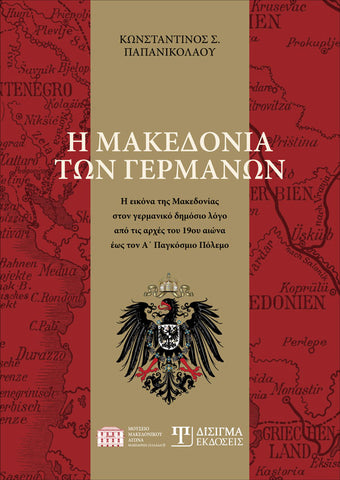
English for Forestry
English for Forestry
The book English for Forestry includes 15 units.
The book discusses fundamental aspects of forestry and inter-related fields. The book aims to enhance English competence through specialized texts, terminology and language tasks. The book is addressed to undergraduate and postgraduate students, researchers, scientists, professionals as well as to the general public who wishes to improve their knowledge on forestry.
Unit 1: Forestry; an Introduction
The unit aims to introduce the discipline of forestry. The unit discusses the basic branches of forestry and explains the differences and similarities among them.
• What is forestry?
• Branches of forestry
Unit 2: Cells, tissues, organs
The unit focuses on plant and animal cells and tissues.
The unit explains the structure of plant and animal cells and discusses the most prominent cell types.
• Plant cells
• Plant cell parts
• Plant cell types
• Animal cells
• Animal cell structure
Unit 3: Wood structure & properties
The unit focuses on the structure of wood. The unit also discusses the basic properties of wood.
• The structure of wood
• Wood properties
Unit 4: Plant communities, trees and diseases
The unit discusses topics on plant communities, forest trees, and tree diseases.
• Plant communities
• Classification of plant communities
• Communities and cood chain
• Forest trees
• Common tree diseases
Unit 5: Forests, rangelands & wetlands
The unit discusses the different types of forests and provides basic information on rangelands and wetlands.
• Forests
• Rangelands
• Wetlands
• Types of wetlands
Unit 6: Soil & inland waters
The unit discusses the topics of soil, soil texture, soil types, soil organisms, organic matter in soil as well as inland waters.
• Soil
• Soil organisms & organic matter
• Soil texture & types
• Inland waters
Unit 7: Forest management
The unit discusses forest management and argues for forest practices and policies.
• Forest management: past vs present
• The Importance of forests
• Clear cutting of forests: advantages and disadvantages
• Forest policy in Europe
Unit 8: Rangeland management
The unit discusses rangeland management and argues for rangeland practices and policies.
• Rangelands, pastures, meadows
• Rangeland types
• Rangeland management principles
• Rangeland health model for the mediterranean area
Unit 9: Watershed management
The unit discusses watershed management and argues for watershed practices and policies.
• Watershed management
• Purposes of watershed management
• Watershed policies
Unit 10: Geographic Information System (GIS)
The unit discusses Geographic Information Systems and its application to forestry.
• Geographic Information Systems
• The uses of Geographic Information Systems
• GIS application in forest management
Unit 11: Forest technical works
The unit discusses forest technical works, such as forest roads, forest engineering structures, removal of vegetation and land delimitation.
• Forest roads
• Forest engineering structures
• Removal of vegetation
• Concrete conservation works
Unit 12: Wood products
The unit discusses wood products and their classification.
• Forest products; classification criteria
• First level groups of classification
Unit 13: Wood processing & infrastructures
The unit discusses wood processing and infrastructures.
• Wood processing; an introduction
• Steps of wood processing
• Wood processing: pulp and paper
• Wood processing: chemical treatment and wastewater
Unit 14: Perspective design
The unit discusses perspective design and distinguishes between different types of perspective.
• Perspective; an introduction
• Types of perspective
Unit 15: Forest organizations
The unit discusses forest organizations, agencies, offices. The unit also discusses forest exploitation and services.
• Forest organizations
• Sociocultural and aesthetic services of forests
• Forest exploitation: related issues
Answers
Downloads
| File Type | File Name |
|---|---|

|
Περιεχόμενα |

|
Ενδεικτικό Κεφάλαιο |
| Συγγραφέας | Βιογραφικό |
|---|---|

|
Dr. Michael Vrahnakis is Professor at the University of Thessaly, Department of Forestry, Wood Sciences and Design (Karditsa, Greece). He holds a PhD in Rangeland Science from the Department of Forestry and Natural Environment, Aristotle University of Thessaloniki, and a BSc from the same Department. His research interests include rangeland ecology and management, floristic diversity and agroforestry. He has published more than 70 papers in international peerreviewed journals, international conferences, symposia and workshops. He is also the author (and co-author) of 19 books and chapters in books. Dr Vrahnakis supervised or participated in more than 30 research projects and 20 management studies on rangelands or protected natural areas in Greece and abroad. He has taught a wide range of courses related to rangeland ecology, rangeland management, biodiversity, and agroforestry, both at a postgraduate and undergraduate level, in several academic faculties in Greece. |

|
Dr. Efthymia Tsaroucha (PhD, MA, BA) holds a Ph.D. in Cognitive Linguistics, Department of Theoretical and Applied Linguistics, School of English Language and Literature, Aristotle University (Greece) jointly with University of Koblenz-Landau (Germany). She holds a Master of Arts in Theoretical and Applied Linguistics (Aristotle University) and a Bachelor of Arts in English Language and Literature (same institution). She has served as a postdoctoral researcher (University of Western Macedonia); specialization in marketing, advertising and communication studies. She has taught and currently teaches language courses (undergraduate level) in various Departments at the University of Thessaly. She has worked as an academic researcher in Greece and Germany. |

|
Dr. Yannis Kazoglou, BSc-MSc in Agriculture, is Associate Professor at the University of Thessaly, Department of Forestry, Wood Sciences and Design (Karditsa, Greece) since April 2019. He holds a PhD from the Department of Forestry and Natural Environment (Aristotle University of Thessaloniki) on the ecology and management of wet grasslands. His main scientific and research interests include the conservation of biodiversity in the Natura 2000 sites, on which he also worked as special advisor of the Deputy Minister of the Environment in 2017-2018. Since 2014, his work emphasizes on appropriate livestock grazing management as means to promote sustainable agroenvironmental practices and effectively connect primary sector activities with nature conservation in rural areas. He has participated in the production of 45 nature management plans and studies and has published more than 50 papers in scientific journals, national and international conferences, as well as articles in collective volumes and books. |










